The HTC One M9 Review: Part 1
by Joshua Ho on March 22, 2015 7:00 PM EST- Posted in
- Smartphones
- HTC
- Qualcomm
- Mobile
- Snapdragon 810
- One M9
System Performance: Snapdragon 810
We've been able to test Snapdragon 810 before, but it was only in the context of Qualcomm’s developer platform tablets and phablets, which have a higher possible TDP than shipping devices, and generally doesn’t have any need for battery life as these devices usually spend all of their time plugged into a charger. Thus, the One M9 represents our first experience with a Snapdragon 810 device with shipping software and hardware. HTC noted during the review process that our devices were running non-final software, and we received an OTA update that significantly changed the thermal throttling characteristics of the device, but this seems to have only affected performance in situations where the SoC was nearing maximum acceptable skin temperatures as performance in these benchmarks were relatively unchanged.
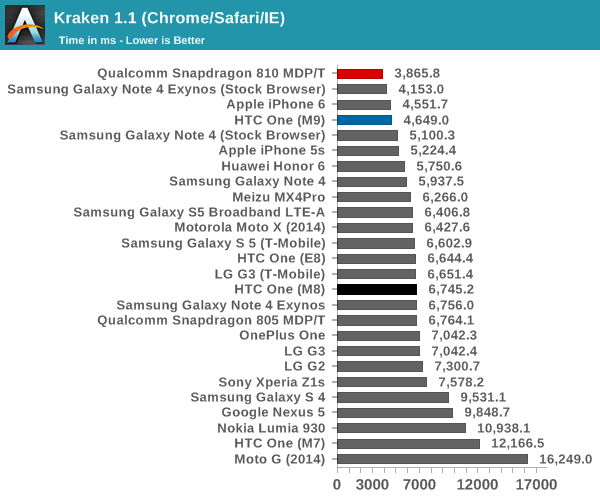
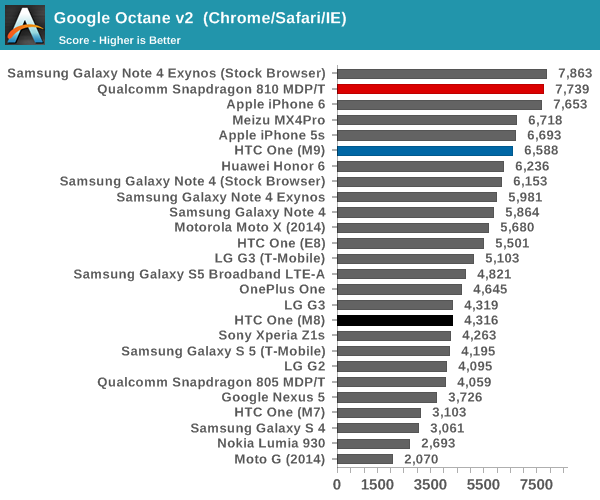

In our first few browser tests, we can see that the One M9 posts dramatically lower performance than the Snapdragon 810 MDP/T, which seems rather strange. However, using CPUBurn to try and load just a single thread reveals that without HTC’s CPU cheats, it’s basically impossible to get the A57 cluster beyond 1.5 to 1.6 GHz. It's important to emphasize that this isn't new behavior, as this was present on pre-release software as well, which means that HTC didn't do this at the last minute.
For those that are unfamiliar with how HTC's CPU cheats work, HTC continues to rely on some level of benchmark detection, and it seems that when a benchmark is detected it enables a "High Performance" mode in the developer settings with no option to disable this mode. It's possible to work around this mode by using benchmarks that evade such detection mechanisms (and we do), but it's also possible manually toggle this mode on and off if a benchmark isn't detected. This benchmark mode appears to relax throttling constraints, but more obviously it enables one to go from a maximum of 1.6 GHz to the rated 2.0 GHz of the Snapdragon 810 for extended periods of time. However, even in this mode we can see that a sustained load of a single thread on the A57 cluster will cause the cluster to throttle to 1.7 GHz in this mode, while without this mode enabled we see that a single thread will eventually cause the A57 cluster to clock around 1 to 1.2 GHz. If the normal governor does allow the SoC to reach 1.9 GHz, I can't really perceive the amount of time that it does reach such a speed.
The most concerning result is WebXPRT, which is a bursty workload that runs over a few minutes, which suggests that we’re already seeing thermal throttling in the M9.

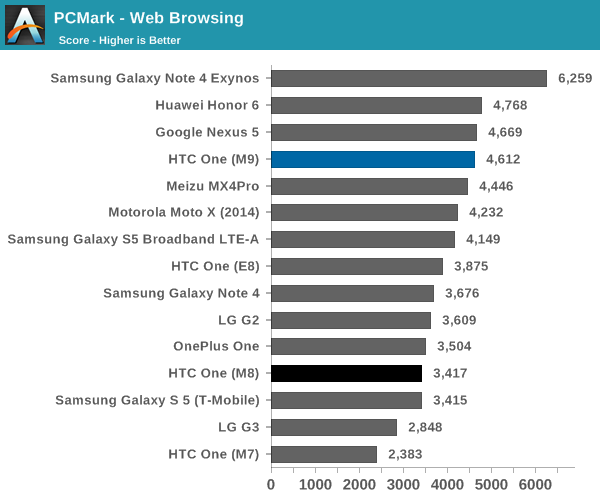
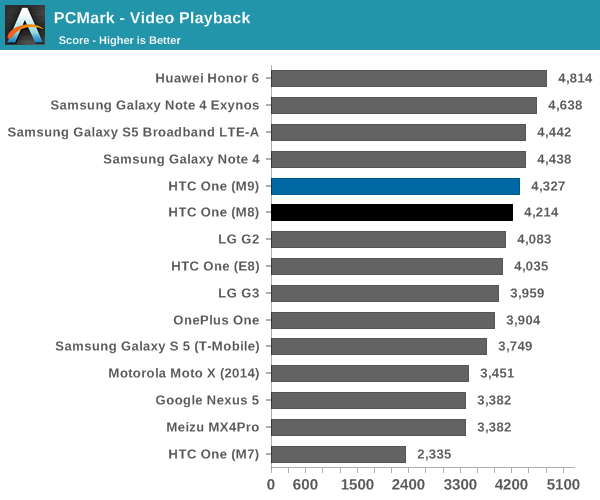
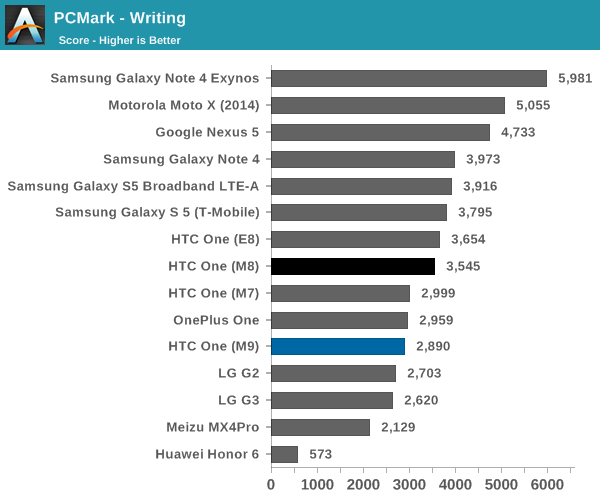
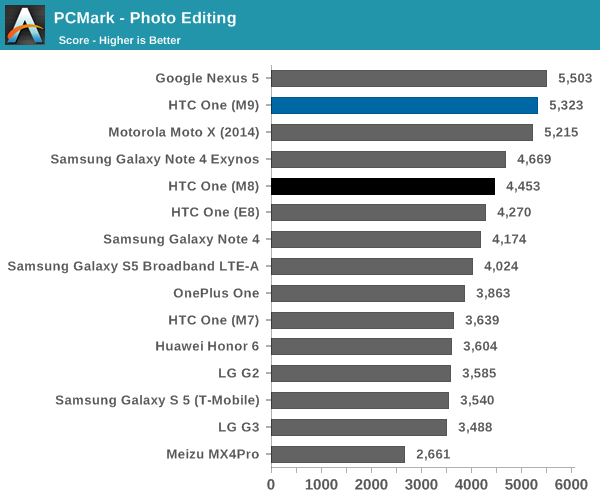
In PCMark, which is a benchmark that tends to focus strongly on race to sleep scenarios, we can see that the Snapdragon 810 appears to significantly trail behind the Exynos 5433, which is on a similar process node. It's hard to say whether this is due to the scheduler configuration or differences in the physical design of the SoC, but at any rate this is another concerning performance from the SoC of the One M9.
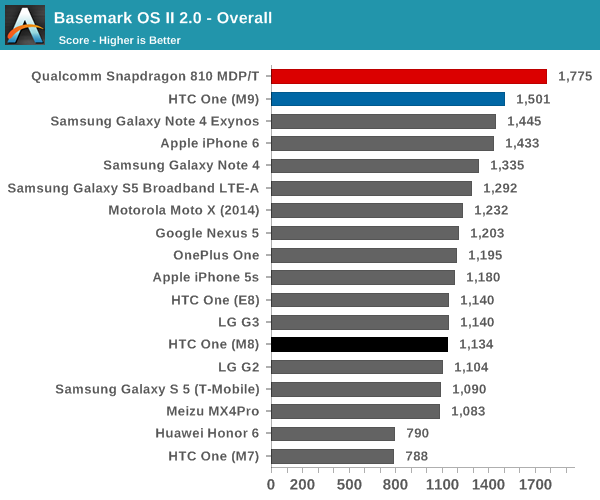

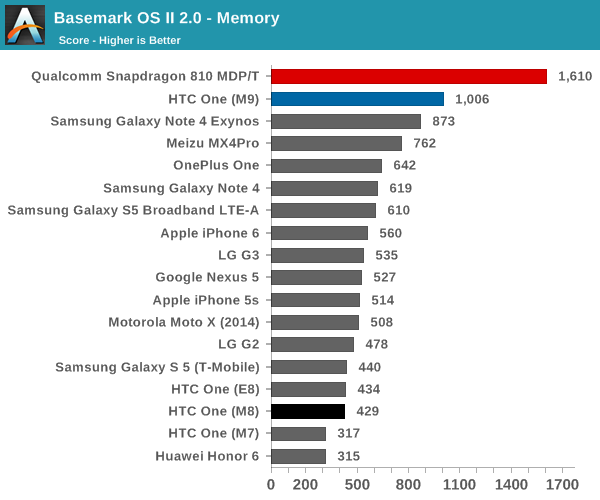
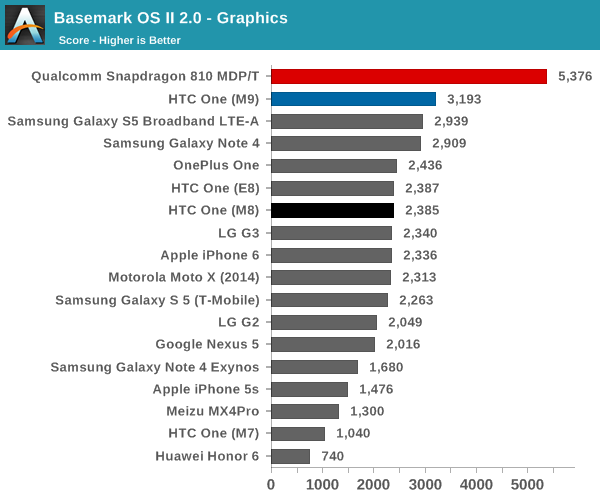
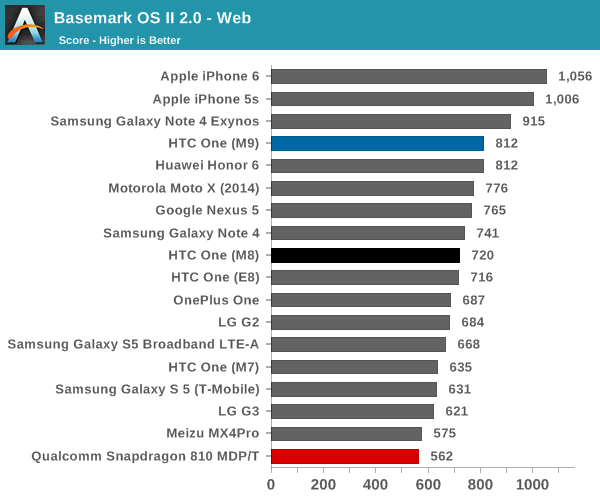
Moving on to the general system performance tests, we see that the M9 delivers a reasonable improvement in performance over the M8, but most of the difference seems to come from the GPU and storage performance rather than anything else that was tested. Overall, the Snapdragon 810 really isn’t off to the best start in any test we’ve thrown at it so far. To see if Snapdragon 810 has any redeeming features we’ll look at GPU performance next.


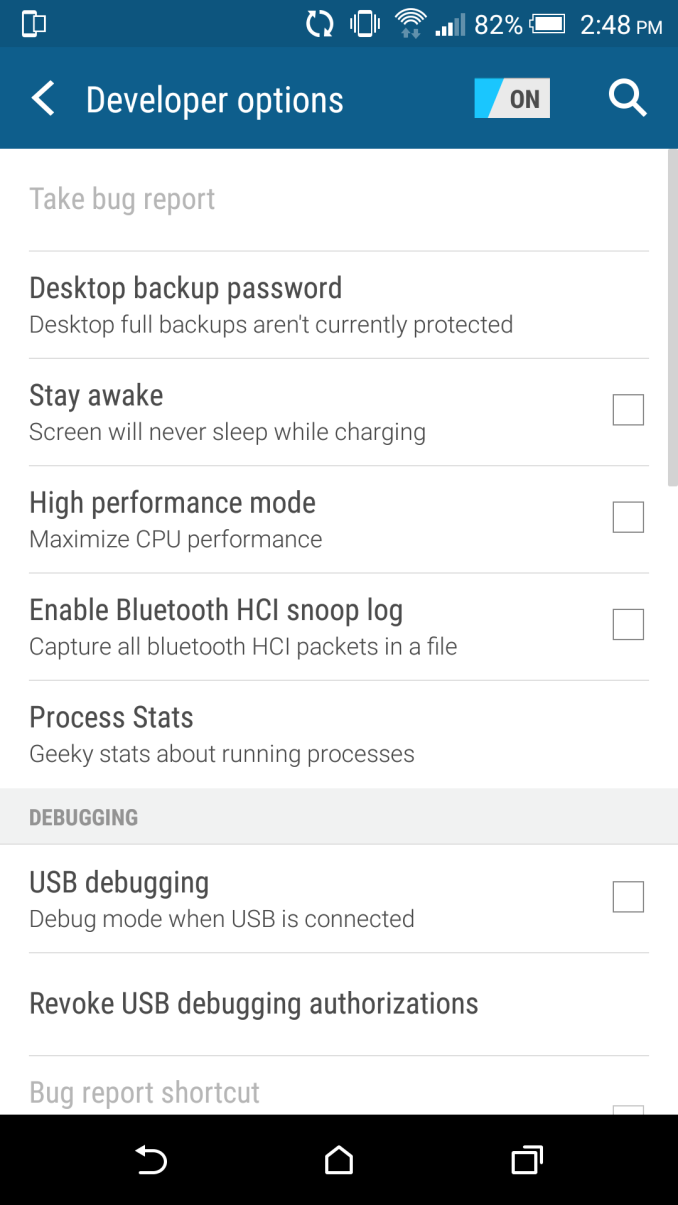








132 Comments
View All Comments
Midwayman - Tuesday, March 24, 2015 - link
With android it almost always seems to be misbehaving apps. Its hard to compare unless you keep the OS stock. I've spent a fair amount of time chasing down wakelocks.Notmyusualid - Sunday, March 22, 2015 - link
My gf noticed too.She went to buy a new Windows phone after she 'fell' into the pool this weekend, drowining the Nokia 820 I bought her. Ok, I dunked her...
But alas the top models were out of stock at the biggest shopping center available. Eventually she left with a Galaxy A7 (Octa core, 5.5" 1080, fast ram, dual sim) and whilst I'm impressed, she, not too much. She really wanted a Windows Phone it seems.
zodiacfml - Monday, March 23, 2015 - link
I feel bad. They've focused too much on the physical materials of the phone, hurting the other parts.They could have also went for a larger display at the same resolution to increase battery size and minimize bezels.
This will be competing with the S6 which is the phone to get in 2015 because of its very nice camera.
mchart - Monday, March 23, 2015 - link
A larger display is not what it needs. What it needs is the same display but in a chassis that is smaller and doesn't have all that useless area needlessly increasing the size of the phone.Impulses - Monday, March 23, 2015 - link
Pretty underwhelming, I'm starting to wonder whether I'll hold on to my current phone even longer than 2 years, it's the first one I've had for more than a year as it is. Z3c was the only thing that tempted me last year...mchart - Monday, March 23, 2015 - link
IMO the Z3C is the best phone in the market. It's just a shame it's been largely ignored.I'm an iPhone fan and the Z3C is the first Android running hardware that hasn't led to disappoint for me. Great battery life, great build quality, feels nice in normal usage, has top end hardware packed in, and is running pretty much vanilla Android.
It can be had for a really great price now too. Low $400s, and you can get it in that same price range direct from Sony with a 1 year warranty if you make a free student account to receive 10% off through them.
It's really the best phone if you can't stand/deal with these larger monsters that are frankly a pain to use on a day to day basis for simple things like phone calls.
sonny73n - Monday, March 23, 2015 - link
The Z3C has a few problems. It would be the best phone in the market if it had better display and protective glass. I wish my Z3C has the same display quality as the M7 and Gorilla 3 front and back glass.mchart - Monday, March 23, 2015 - link
The z3 has gorilla glass front and back. The display is high quality as well. It's just not 1080p. The ppi is still high enough for that size though.V900 - Monday, March 23, 2015 - link
Yeah, 1080p is really overkill for a phone right around 4 inches. I honestly couldn't tell the difference between 1080p 720p and the 1136*640 on a 4 inch screen in regular usage. As long as it's above 300 PPI few people would be able to tell...Impulses - Monday, March 23, 2015 - link
If I was buying a phone today I'd probably pick it over my Nexus 5 (are they even still selling the N5?), tho I'd have to switch carriers for it... I'm satisfied with Sprint in my area for now and that's one of the reasons I've kept the N5.A Z3c with Qi wireless charging and OIS would be the perfect compact Android phone IMO. Hopefully Sony doesn't abandon smaller devices (or the smartphone market altogether) any time soon.
Whatever they follow up the Z3c might just be the replacement for the N5 I've had since Nov 2013... I had three HTC phones before the, pretty happy with them, the One just hasn't done it for me.
Ergonomically it's always felt odd and it seems they're treading water in most other senses (no pun intended).